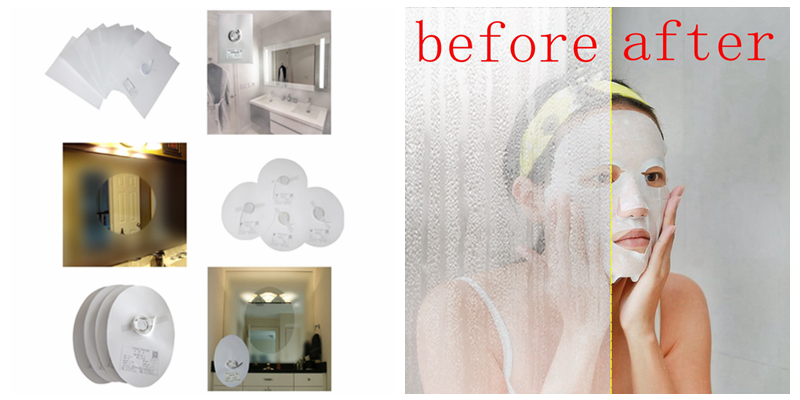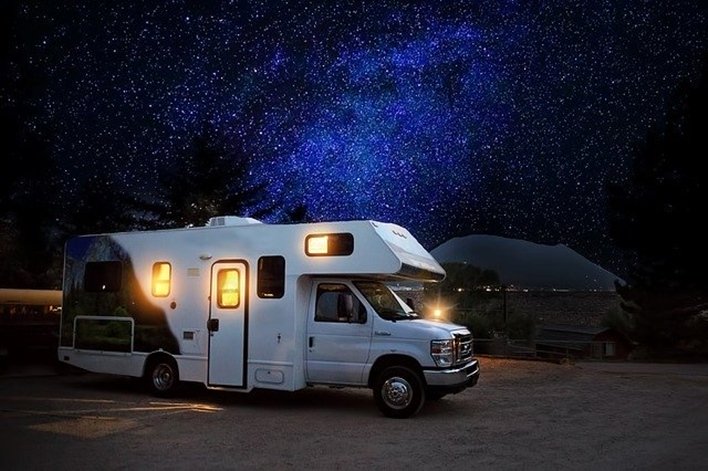LED is the future of lighting, and under cabinet applications are no exception. Regardless of whether you choose to purchase an LED puck light kit or LED light bar or LED strip, the advantages of LED are numerous.
Longer lifetimes - under cabinet lights are not impossible to access, but changing out old light bulbs is never a fun chore. With LEDs, light output does not diminish singificantly until after 25k - 50k hours - that is 10 to 20 years depending on your usage.
Higher efficiency - LED under cabinet lights provide more light per unit of electricity. Why spend more on your electric bill when you can start saving money immediately?
More color options - want something really warm and cozy? Choose a 2700K LED strip. Want something with more energy? Choose 4000K. Or want the ability to achieve any color, including punchy greens and cool, dark blues? Try an RGB LED strip.
Non-toxic - LED lights are durable and do not contain mercury or other toxic chemicals. If you're installing under cabinet lighting for a kitchen application, this is an additional consideration since the last thing you want is accidental contamination of food and food prep areas.
Best Color for Under Cabinet Lighting
Alright, so we've convinced you that LED is the way to go. But one of the advantages of LEDs - having more color options - might cause some confusion with all of the choices available. Below we break down your options.
Color Temperature
Color temperature is a number that describes how "yellow" or "blue" a light's color is. Below we provide some guidelines, but keep in mind that there is no absolutely correct choice, and much of it can be based on your personal preference.
- 2700K is considered the same color as the classic incandescent light bulb
- 3000K is slightly bluer and is similar to halogen bulb light color, but still has a warm, inviting yellow color to it.
- 4000K is often called "neutral white" because it is neither blue nor yellow - and is the middle of the color temperature scale.
- 5000K is commonly used for determining color, such as for prints and textiles
- 6500K is considered natural daylight, and is a good way to approximate appearance in outdoor lighting conditions

For kitchen applications, we strongly recommend a color temperature between 3000K and 4000K.
Why? Well, lights below 3000K will cast a very yellowish-orange hue, which can make color perception a bit difficult if you are using the area for food prep, so we don't recommend any lighting below 3000K.
Higher color temperatures allow for better color acuity. 4000K provides a nice, balanced white that no longer has much of a yellow/orange bias, making it more easier to "see" colors properly.
Unless you're lighting an industrial area where "daylight" color is necessary, we strongly recommend staying below 4000K, especially for residential under cabinet lighting applications. This is simply because the rest of the kitchen and home likely has 2700K or 3000K lighting - if you suddenly install something too "cool" for the kitchen, you may end up with an unsightly color mismatch.
Below is an example of a kitchen whose under cabinet lighting color temperature is too high - it simply appears too blue and does not mesh well with the rest of the interior lighting.
 CRI: pick 90 or above
CRI: pick 90 or above
CRI is a bit tricky to understand because it is not immediately visible from just simply looking at the emitted light from an under cabinet light.
CRI is score ranging from 0 to 100 which measures how accurate objects appear under a light. The higher the score, the more accurate.
What does accurate really mean, anyway?
Let's say you are trying to judge the ripeness of a tomato you're about to cut. A perfectly accurate LED under cabinet light would make the tomato's color look exactly the same as it does under natural daylight.
An inaccurate (low CRI) LED under cabinet light, however, would make the tomato's color look different. Despite your best efforts, you may be unable to determine accurately whether a tomato is ripe or not.
Well, what is a sufficient CRI number?
- For non-color critical tasks, we recommend purchasing LED under cabinet lights with a minimum of 90 CRI.
- For enhanced appearance and color accuracy, we recommend 95 CRI or above, including R9 values over 80
How do you know what an LED under cabinet light's CCT or CRI is? Virtually all manufacturers will be able to provide this to you on the product specification sheet or packaging.
-
 How to Install Heat Pad on Mirror?
How to Install Heat Pad on Mirror?Do you like ?0
Read more -
 Why LED Lights are Perfect for RVs & Boats?
Why LED Lights are Perfect for RVs & Boats?Do you like ?0
Read more -
 How Good Anti-fog Film for Mirror!
How Good Anti-fog Film for Mirror!Do you like ?0
Read more -
 How do you choose which lights to buy for your RV’s interior?
How do you choose which lights to buy for your RV’s interior?Do you like ?0
Read more -
 What Are the Most Common Interior Lights Used by RV Manufacturers?
What Are the Most Common Interior Lights Used by RV Manufacturers?Do you like ?0
Read more -
 Do You Know The Great Uses for Puck Lights?
Do You Know The Great Uses for Puck Lights?Do you like ?0
Read more






